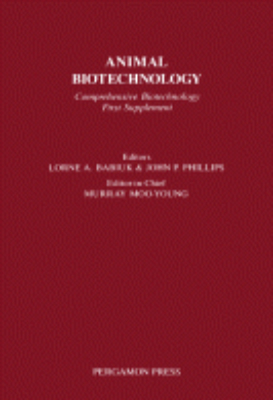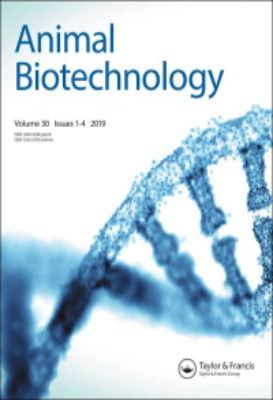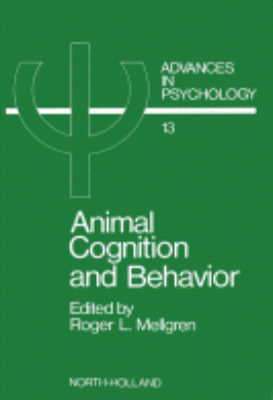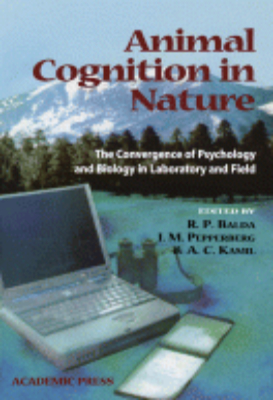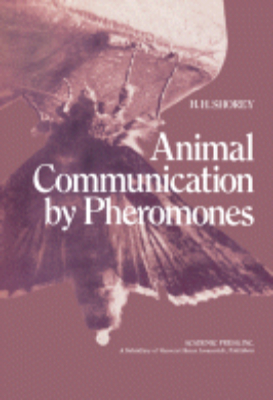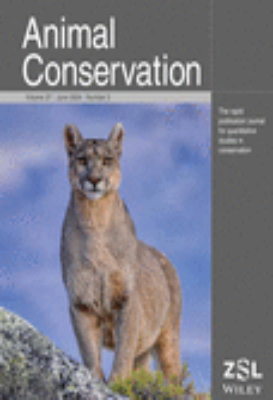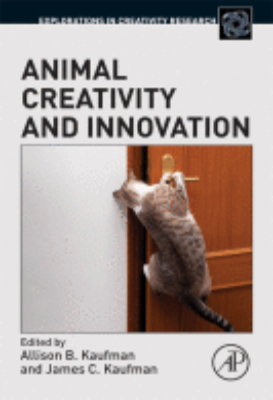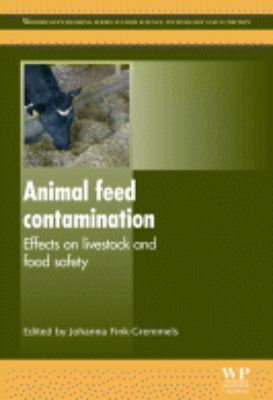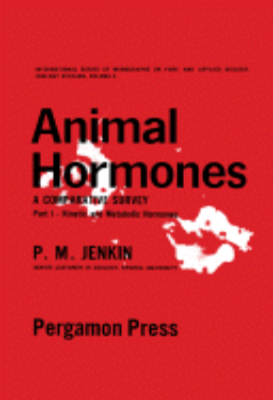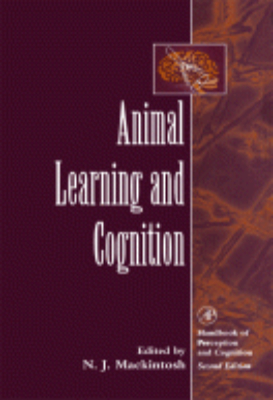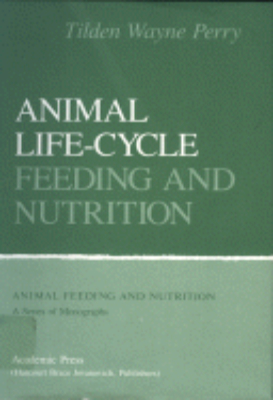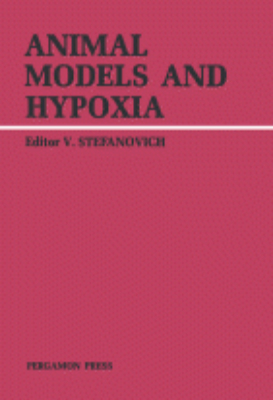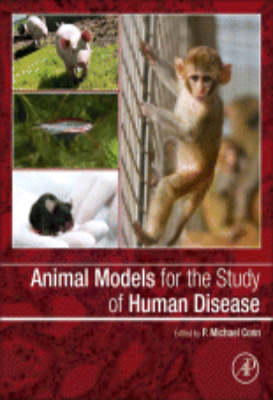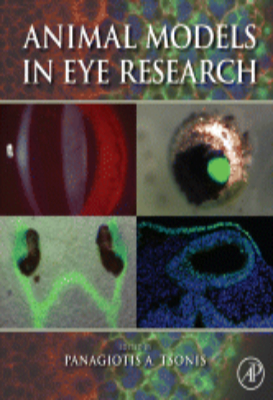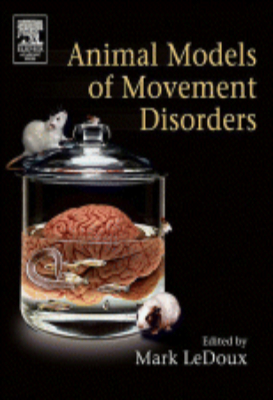E-Resources
Animal Biotechnology: 1989
The advent of biotechnology has the potential to develop a variety of novel or better quality products for the treatment of a large number of diseases in livestock. In addition, as we understand more about the reproductive physiology of animals, the potential exists to dramatically increase the productivity of animals through better therapeutics and diagnostics for the control of many infectious diseases. Productivity can also be increased through animal breeding strategies including gene transfer, micromanipulation of embryos and gamete sex selection. As well as being a valuable reference to current knowledge in these areas, this first supplement toComprehensive Biotechnologyalso looks at societal concerns over the use of antibiotics and chemical residues in meat and milk products, which are forcing biotechnologists to investigate more natural means of controlling infection by stimulating the animal's own immune system to combat infection. The identification of a variety of cytokines which are involved in regulating immune responses provides opportunities to use the animal's natural defence mechanisms to combat many infections or increase the animal's resistance to such infections. These approaches should provide tools for eventual elimination of specific diseases from counties, regions or whole continents.
Animal Biotechnology: 2014
"Animal Biotechnology introduces applications of animal biotechnology and implications for human health and welfare. It begins with an introduction to animal cell cultures and genome sequencing analysis and provides readers with a review of available cell and molecular tools. Topics here include the use of transgenic animal models, tissue engineering, nanobiotechnology, and proteomics. The book then delivers in-depth examples of applications in human health and prospects for the future, including cytogenetics and molecular genetics, xenografts, and treatment of HIV and cancers. All this is complemented by a discussion of the ethical and safety considerations in the field.Animal biotechnology is a broad field encompassing the polarities of fundamental and applied research, including molecular modeling, gene manipulation, development of diagnostics and vaccines, and manipulation of tissue. Given the tools that are currently available and the translational potential for these studies, animal biotechnology has become one of the most essential subjects for those studying life sciences. Key Features. Highlights the latest biomedical applications of genetically modified and cloned animals with a focus on cancer and infectious diseases. Provides firsthand accounts of the use of biotechnology tools, including molecular markers, stem cells, and tissue engineering"
Animal Cell Bioreactors
Animal Cell Bioreactors provides an introduction to the underlying principles and strategies in the in vitro cell culture biotechnology. It addresses engineering aspects such as mass transfer, instrumentation, and control ensuring successful design and operation of animal cell bioreactors. The goal is to provide a comprehensive analysis and review in the advancement of the bioreactor systems for large-scale animal cell cultures. The book is organized into four parts. Part I traces the historical development of animal cell biotechnology. It presents examples of work in progress that seeks to make animal cell biotechnology processes as productive on a cost per unit of product basis as that achieved by other microbial systems. Part II includes chapters dealing with the implications of cell biology in animal cell biotechnology; protein-bound oligosaccharides and their structures; the development of serum-free media and its use in the production of biologically active substances; and the metabolism of mammalian cells. Part III focuses on animal cell cultivation, covering topics such as the fixed bed immobilized culture; three-dimensional microcarriers; and hydrodynamic phenomena in microcarrier cultures. Part IV discusses the design, operation, and control of animal cell bioreactors.
Animal Cell Biotechnology
There has been a dramatic increase in the perception of the value of animal cell biotechnology to the research and manufacturing communities in recent years. This volume seeks to keep the reader up-to-date with this progress. This sixth and final volume in the series concentrates on the biology of animal cells in culture, giving special attention to the relationship between biology and the ability to use such cells productively. As the search continues for greater productivity, there is a need to understand the switches within cells that control expression. Additional abilities to manipulate those switches in a controllable manner are also required. In the last five years, considerable progress has been made in the elucidation of the mechanisms for cell signaling and control of gene expression. The 13 chapters of this volume are devoted to these subjects and to techniques in areas of particular concern in manufacturing circles. The achievements in the field to date are described in this book, which, together with its five companion volumes in the series, will provide a building block for the future development of animal cell biotechnology.
Animal Cell Technology; 1994
Animal Cell Technology: Products of Today, Prospects for Tomorrow is a collection of papers that discusses the advancement and future of biotechnology. The book presents a total of 164 materials that are organized into 22 sections. The coverage of the text includes the various methodologies involved in animal cell technology, such as post translational modifications; kinetics and modeling; and measurement and assay. The book also covers product safety and consistency testing; products from animal cells in culture; and apoptosis and cell biology. The text will be of great use to biologists, biotechnicians, and biological engineers. Readers who have an interest in the advancement of biotechnology will also benefit from the book.
Animal Cell Technology: 1992
Animal Cell Technology: Developments, Processes and Products is a compilation of scientific papers presented at the 11th European Society for Animal Cell Technology (ESACT) Meeting, held in Brighton, United Kingdom. The book is a collection of various works of scientists, engineers, and other specialists from Europe and other parts of the world who are working with animal cells. The books aim is to communicate experiences and research findings on the development of cell systems. The research papers are grouped into 25 sections encompassing 145 chapters. Subjects covered range from cells and physiology engineering dealing with cell characterization, cell culture establishment, cloning, and cell engineering. Topics on culture media, ammonium detoxification, the effects of physical parameters on cell cultures, assays and monitoring systems, and bioreactor techniques are also covered. Discussions are likewise made on the products from animal cells in culture, virus removal, and DNA determination and characterization in relation to safety issues. The book will be useful for cell biologists, molecular biologists, biochemists, biochemical engineers, and students engaged in the study of animal cell cultures.
Animal Cognition in Nature
In this book, the editors bring together results from studies on all kinds of animals to show how thinking on many behaviors as truly cognitive processes can help us to understand the biology involved. Taking ideas and observations from the while range of research into animal behavior leads to unexpected and stimulating ideas. A space is created where the work of field ecologists, evolutionary ecologists and experimental psychologists can interact and contribute to a greater understanding of complex animal behavior, and to the development of a new and coherent field of study.
Animal Communication by Pheromones
Animal Communication by Pheromones describes how the behavior of animals is controlled and influenced by pheromone communication. This book describes the mechanism through which the social animals interact with each other and by which they are organized according to their relative statuses and functions. The text then describes the pheromonal communication system; the mechanisms of movement and orientation to pheromone sources; and recognition, aggregation, and dispersion pheromone behaviors. The sex pheromone behavior; the environmental and physiological control of sex pheromone behavior; and the aspects of pheromones as stimulators or inhibitors of aggression are considered. The book further tackles sex pheromones; reproductive isolation; and the evolution of pheromonal communication. Entomologists and animal scientists will find the book useful.
Animal Creativity and Innovation
"Animal Creativity and Innovation explores theories and research on animal innovation and creativity, comparing and contrasting it with theory and research on human creativity and innovation. In doing so, it encompasses findings from psychology, biology, neuroscience, engineering, business, ecology, and education. The book includes examples of animal innovation in parrots, dogs, marine mammals, insects, and primates, exploring parallels from creative play in children. The book defines creativity, differentiating it from play, and looks at evolutionary models and neurological constructs. The book further explores applied aspects of animal innovation and creativity including tool use and group dynamics, as well as barriers to creativity. The final chapters look into how creative behavior may be taught or trained. Each chapter is followed by a commentary for integration of thoughts and ideas between animal and human research, behavioral and cognitive research, and theory and observation in real life. Key Features. Compares theory and research on animal and human creativity. Defines and differentiates creativity from play. Reviews applied creativity in tool use and social dynamics. Includes examples of animal creativity in multiple species"
Animal Feed Contamination
"The production of animal feed increasingly relies on the global acquisition of feed material, increasing the risk of chemical and microbiological contaminants being transferred into food-producing animals. Animal feed contamination provides a comprehensive overview of recent research into animal feed contaminants and their negative effects on both animal and human health. Part one focuses on the contamination of feeds and fodder by microorganisms and animal by-products. Analysis of contamination by persistent organic pollutants and toxic metals follows in part two, before the problem of natural toxins is considered in part three. Veterinary medicinal products as contaminants are explored in part four, along with a discussion of the use of antimicrobials in animal feed. Part five goes on to highlight the risk from emerging technologies. Finally, part six explores feed safety and quality management by considering the safe supply and management of animal feed, the process of sampling for contaminant analysis, and the GMP+ feed safety assurance scheme. With its distinguished editor and international team of expert contributors, Animal feed contamination is an indispensable reference work for all those responsible for food safety control in the food and feed industries, as well as a key source for researchers in this area. Key Features. Provides a comprehensive review of research into animal feed contaminants and their negative effects on both animal and human health. Examines the contamination of feeds and fodder by microorganisms and animal by-products. Analyses contamination by persistant organic pollutants, toxic metals and natural toxins"
Animal Feeding Stuffs Legislation of the UK
Animal Feeding Stuffs Legislation of the UK: A Concise Guide offers a guide to legislation governing the production, sale, and distribution of animal feeding stuffs in the UK. Individual statutory instruments are discussed and categorized according to their relevance to raw materials, straight feeding stuffs, compound feeds, medicated feeds, and additives. Sampling, the rights of inspectors under different acts and regulations, codes of practice, and labeling requirements are also considered. This guide is comprised of nine chapters and begins with an overview of UK laws governing the manufacture and supply of animal feeding stuffs, including Agriculture Act 1970 Part IV, Medicines Act 1968 and Regulations made under it, and Animal Health and Welfare Act 1984. The next chapter presents a definition of terms, including those applied to animals with respect to the UK feed regulations. The reader is then introduced to statutory statements for raw material or straight feeding stuff; compound feeding stuffs; and additives and premixtures. This book also considers the registration system for manufacturers and qualifying on-farm mixers, along with licensing requirements for products to be used in feeds. The final chapter is devoted to statutory requirements for sampling and analysis of animal feeding stuffs. This monograph will be a helpful and authoritative resource for feed manufacturers, raw materials suppliers, technical advisors, enforcement agencies, and students of feed and livestock production.
Animal Hormones
Animal Hormones: A Comparative Survey, Part IKinetic and Metabolic Hormones provides a comprehensive coverage of the properties of kinetic and metabolic hormones of both vertebrates and invertebrates; the title particularly covers the sources, actions, and secretion of the said hormones. The text first details the general concerns with the hormones, such as the history, chemical activators, mechanical activation, types, and identification. The next chapter covers the sources of kinetic and metabolic hormones. Chapters 3 and 4 tackle kinetic hormones, while Chapter 5 discusses metabolic hormones. The book will be of great interest to students, researchers, and practitioners of zoology and biochemistry.
Animal Learning and Cognition
How do animals learn By what means can animals be conditioned This volume of the acclaimed Handbook of Perception and Cognition, Second Edition, reviews such basic models as Pavlovian conditioning as well as more modern models of animal memory and social cognition. Sure to represent a benchmark of a vast literature from diverse disciplines, this reference work is a useful addition to any library devoted to animal learning, conditioning behavior, and interaction.
Animal Life-cycle Feeding and Nutrition
Animal Life-Cycle Feeding and Nutrition reviews developments in feeding and nutrition throughout an animal's life cycle and covers a wide range of topics, from utilization of nutrients such as carbohydrates and proteins to nutrient digestion by ruminants, swine, poultry, and horses. Feedstuffs such as pasture and harvested forages, protein concentrates, and cereal and sorghum grains are also discussed. Comprised of 21 chapters, this book begins with a discussion on nutrients and their utilization, including carbohydrates, lipids, proteins, and minerals and vitamins. Nutrient digestion by ruminants, swine, poultry, and horses are then compared and feedstuffs for livestock are evaluated. The next section deals with feedstuffs such as pasture and harvested forages, protein concentrates, and cereal and sorghum grains, together with molasses, manure, and other miscellaneous feed ingredients. The remaining chapters explore the effect of processing on the nutrient value of feedstuffs; balancing of rations; and feeding of animals including swine, beef and dairy cattle, poultry, sheep, horses, dogs, and goats. This monograph is designed for students of animal sciences, for veterinary students as well as doctors of veterinary medicine, and for practitioners of livestock feeding.
Animal Memory
Animal Memory is based on the proceedings of a symposium held at Dalhousie University in the summer of 1969. Each of the seven chapters provide broad coverage of the topic with which it is concerned, and the experimental work reported is representative of the most significant developments in the field. The book includes two studies on associative memorythe memory of one event which is essential to its association (over a delay) with subsequent events. One study shows that shows that animals can remember events from one learning trial to the next and that their behavior will be determined largely by the sequences of trials with differing outcomes; the other presents research on the association of flavors with toxicosis in a conditioning paradigm. Separate chapters deal with retentive memorythe retention and forgetting of learned behavior over time; and the physiological basis of memory in terms of consolidation theory. These studies demonstrate that animals do forget and examine theories of forgetting. The final chapter provides a critical discussion based on all of the foregoing material in which the topics covered in the book are related to current work on human retention and forgetting.
Animal Migration Orientation and Navigation
Animal Migration, Orientation, and Navigation presents the various aspects of animal migration, including the evolution of migration, climatic and meteorological influences, and bioenergetics. This book discusses the physiological control, sensory systems, orientation and navigation, and biological clocks and phenology aspects of animal migration. Organized into five chapters, this book begins with an overview of the migration strategies of animals in the context of a space continuum. This text then explains the influence of short- and long-term climatic cycles on the spectrum of migratory patterns in nature. Other chapters consider the energetic requirements of different migration strategies and the energy stores of the migrants. This book discusses as well the physiological basis of animal migration, with emphasis on endocrinal findings on the timing and energetic aspects of different migration strategies. The final chapter deals with the mechanisms used in direction finding by migrating animals. This book is a valuable resource for biologists and ecologists.
Animal Models and Hypoxia
Animal Models and Hypoxia consists of proceedings from an international symposium. The text discusses the developments made on the study of brain metabolism. An article about the regional utilization of glucose in the brain of mammals is presented. There is also a section that reviews the energy metabolism in the nervous system of insects. The topics covered includes the role of sympathetic innervation in the regulation of cerebral blood flow during hypercapnia, the comparative aspects of energy metabolism in non-mammalian brains under normoxic and hypoxic conditions, and an anoxic rat model. A method developed to gauge the rates of glucose utilization in the central nervous system is evaluated. This method is effective in mapping the functional neural pathways base on stimulated metabolic responses. Factors that contribute to the development of gerontopsychiatric disorders in men are reviewed. The book will provide useful information to doctors, veterinarians, neurologists, students, and researchers in the field of neurology.
Animal Models for the study of human disease
"Animal Models for the Study of Human Disease identifies important animal models and assesses the advantages and disadvantages of each model for the study of human disease. The first section addresses how to locate resources, animal alternatives, animal ethics and related issues, much needed information for researchers across the biological sciences and biomedicine.The next sections of the work offers models for disease-oriented topics, including cardiac and pulmonary diseases, aging, infectious diseases, obesity, diabetes, neurological diseases, joint diseases, visual disorders, cancer, hypertension, genetic diseases, and diseases of abuse. Key Features. Organized by disease orientation for ease of searchability. Provides information on locating resources, animal alternatives and animal ethics. Covers a broad range of animal models used in research for human disease"
Animal Models in Eye Research
"The eye is a complex sensory organ, which enables visual perception of the world. Thus the eye has several tissues that do different tasks. One of the most basic aspects of eye function is the sensitivity of cells to light and its transduction though the optic nerve to the brain. Different organisms use different ways to achieve these tasks. In this sense, eye function becomes a very important evolutionary aspect as well. This book presents the different animal models that are commonly used for eye research and their uniqueness in evaluating different aspects of eye development, evolution, physiology and disease. Key Features. Presents information on the major animal models used in eye research including invertebrates and vertebrates. Provides researchers with information needed to choose between model organisms. Includes an introductory chapter on the different types of eyes, stressing possible common molecular machinery"
Animal Models of Movement Disorders
The use of animal models is a key aspect of scientific research in numerous fields of medicine. This book vigorously examines the important contributions and application of animal models to the understanding of human movement disorders and will serve as an essential resource for basic neuroscientists engaged in movement disorders research. Academic clinicians, translational researchers and basic scientists are brought together to connect experimental findings made in different animal models to the clinical features, pathophysiology and treatment of human movement disorders. A vital feature of this book is an accompanying DVD with video clips of human movement disorders and their corresponding animal models. The book is divided into sections on Parkinson disease, Huntington disease, dystonia, tremor, paroxysmal movement disorders, ataxia, myoclonus, restless legs syndrome, drug-induced movement disorders, multiple system atrophy, progressive supranuclear palsy/corticobasal degeneration and spasticity. This book serves as an essential resource for both clinicians interested in the science being generated with animal models and basic scientists studying the pathogenesis of particular movement disorders. Key Features * Provides a single comprehensive resource on animal models of movement disorders that academic clinicians, translational researchers, and basic neuroscientists can refer to * Includes contributions by expert movement disorder clinicians and top-level researchers in the field * Features a DVD containing over 170 video clips of human movement disorders and the corresponding animal models
Animal Population Ecology
Animal Population Ecology focuses on the interaction between the various factors that affect an animal population. Population ecology is the study of the factors that determine the abundance of species and is concerned with the identification and mode of action of those environmental factors that cause fluctuations in population size and of those which determine the extent of these fluctuations. Organized into 11 chapters, the book initially examines some of the basic ideas about animal populations and defines many of the terms used by population ecologists. Then, it describes the action of the most important factors affecting population size. The interaction between these factors is demonstrated in chapters 8 and 9, wherein the results from studies of a few selected species are presented in detail. Finally, chapters 10 and 11 cover the development of generalized theories of population dynamics and their application to practical problems. With a strong focus on intensive study of animal populations in the field, rather than elaborate theories, the book will be helpful to population ecologists, animal researchers, teachers, and students.
Animal Products in Human Nutrition
Animal Products in Human Nutrition evaluates the contributions of food derived from animals to a balanced diet. The individual chapters in this book are organized into two major sections. The first section begins with a history of the use of animal-derived foods from the early ages of mankind, followed by a treatise of economic and resource costs of animal foods, including use of industrial and agricultural by-products and fish. Trends in the changes in the composition of American diets and the metabolism and disposition of common environmental toxins within animal tissues are also included in this section. The second section details the essential nutrients provided by animal products, as well as the possible effects of consumption of animal products on the development of hypertension, milk intolerance, infections from food-borne bacteria, cancer, and atherosclerosis. This book will be useful to agricultural scientists, journalists, professionals that deal with human nutrition, and human nutritionists and dietitians.
Animal Science
Animal Science: Reproduction, Climate, Meat, Wool is a 20-chapter book that begins with the concept of animal reproduction, including reproductive hormones, breeding, fertility, and fecundity. The next set of chapters elucidates the influence of climate on the animals. Subsequent chapters explore specific topics on meat and wool, in particular, the beef carcass; meat quality; mutton; lamb; composition and properties of wool; definition and measurement of wool quality; and quantitative aspect of wool growth. This book will be valuable for advanced students, as well as for advanced producers.

